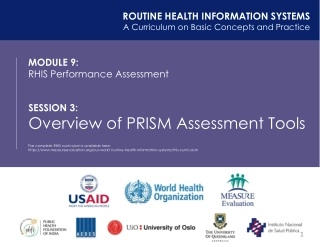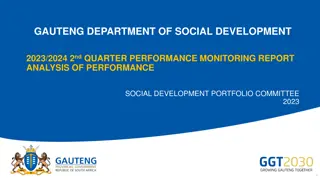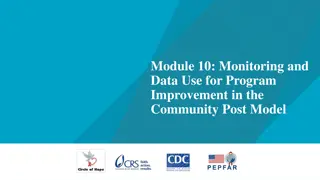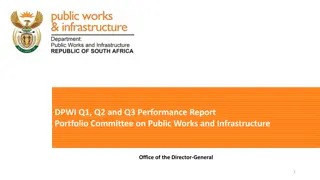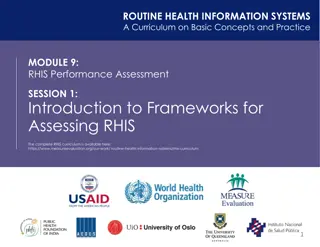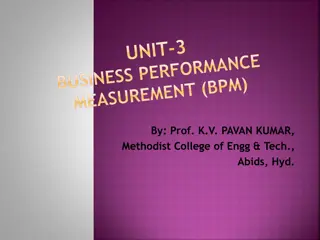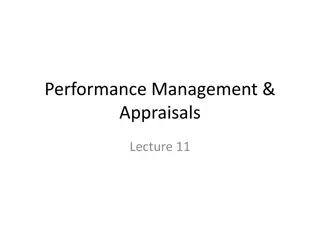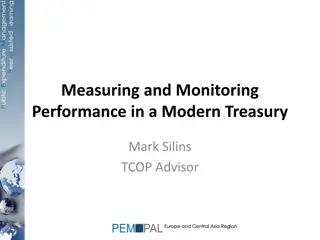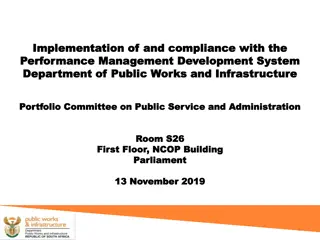
Elements of Performance Evaluation and Risk Management in Organizational Objectives
Explore the essential elements of performance evaluation - effectiveness, efficiency, ethics - and delve into risk management strategies for achieving organizational objectives. Understand the importance of identifying, evaluating, and prioritizing risks to ensure successful outcomes while maintaining accountability and transparency.
Download Presentation

Please find below an Image/Link to download the presentation.
The content on the website is provided AS IS for your information and personal use only. It may not be sold, licensed, or shared on other websites without obtaining consent from the author. If you encounter any issues during the download, it is possible that the publisher has removed the file from their server.
You are allowed to download the files provided on this website for personal or commercial use, subject to the condition that they are used lawfully. All files are the property of their respective owners.
The content on the website is provided AS IS for your information and personal use only. It may not be sold, licensed, or shared on other websites without obtaining consent from the author.
E N D
Presentation Transcript
The elements of performance Effectiveness Efficiency Ethics Define worthwhile objectives Remove obstacles to achieving them in our internal and external context Make sure our people, resources and systems are capable. Minimum resources to do the work to our standards Minimal waste Principles of a circular economy. Each of us needs to be accountable Our systems of governance need to be transparent Our decisions must be consistent and fair We commit to the Code of Conduct We follow the spirit and letter of the law. April 25 2
Each element of performance is a risk management proposition.
Identifying and analysing risks to our objectives Assessing risks to our objectives is simply the best way to identify and analyse obstacles and opportunities. This analysis will help us control the type and amount of uncertainty in our internal and external context. We ll understand how to remove obstacles to achieving our objectives make sure our people, resources and systems can work as effectively as possible. It s also a good test of whether we have objectives that are achievable and appropriate for our organisation. Risk is the effect of uncertainty on our objectives Reducing uncertainty will make a difference to whether we achieve them April 25 4
Evaluating risks to our objectives As part of the risk assessment, we evaluate risk, which is crucial in deciding how we should use our resources to control the effects of uncertainty on our objectives. This puts risk management at the heart of our efforts to make sure we spend public money wisely to achieve our objectives without waste. It also supports accountability. Prioritise Evaluate the risks to our objectives based on our analysis of their consequences and likelihood. Demonstrate how our decisions have helped us meet our objectives Learn and improve Prioritise expenditure on controlling risk and investing in opportunity Analyse opportunity costs Evaluate Demonstrate April 25 5
Understanding our appetite for risk Our statement of risk appetite sends a clear signal to everyone in the organisation about how much risk and what type of risk we may take on to meet the organisation s objectives. It helps us look after the organisation s reputation and pursue opportunities confidently make sure that the wide range of work being done across our organisation is consistent, accountable and complies with legislation direct our resources to controlling risks that you have a low appetite for, rather than risks you have a high appetite for. Our appetite for risk to safety Our appetite for risk to service delivery Our appetite for innovation April 25 6
Resilience Finally, organisations that manage risk perform well across the broad range of situations, from the predictable to the chaotic. They perform well because their people are capable and know how to use resources and systems effectively and flexibly in a wide range of situations accountable even when roles and responsibilities are stretched open to realise the benefits of uncertainty through innovation and productive change. Capable Accountable Innovative April 25 7
Risk management is critical to the performance of our organisation.


